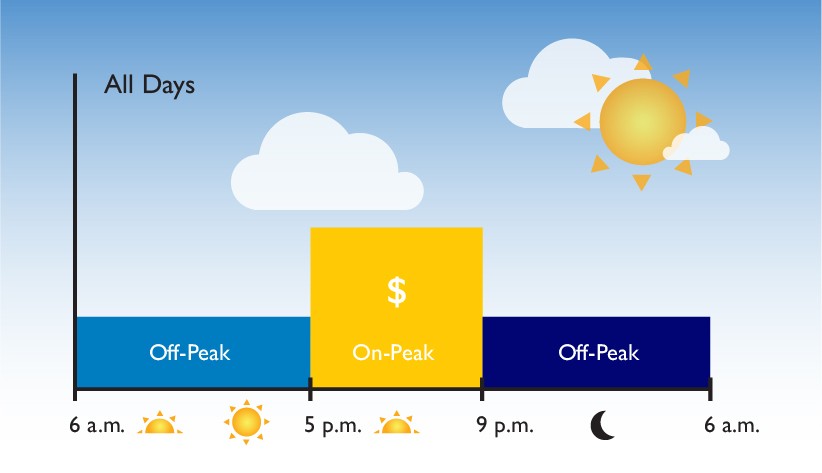Oregon Schedule 29 Time of Use option
About this option
Schedule 29 is best for non-residential customers with low load-factors that don’t use a lot of energy (kWh) relative to their peak demand (kW).
- This option is not available for customers who otherwise qualify for Schedule 23.
- For customers on Schedule 28, load factor (how much energy you use divided by the maximum amount you could use for your peak demand if you ran at that level in every hour) generally needs to be less than 4% to save money on Schedule 29.
- For customers on Schedule 30, load factor generally needs to be less than 60% to save money on Schedule 29.
Customers on Schedule 29 can save money by shifting energy use away from on-peak hours during the summer and winter months.

Pricing
Most general service customers pay demand charges based on their highest measured monthly demand in kilowatts (kW) plus they pay energy charges based on their total monthly usage in kilowatt-hours (kWh). On Schedule 29, participants will not pay a traditional demand charge but will instead be charged a higher rate for their first block of energy kWh and a lower rate for all additional kWh. The number of kWh in the first block will be determined for each customer, each month, based on that customer’s monthly demand in kW. Specifically, the first block will be calculated as 50 kWh per kW of demand.
Customers on Schedule 29 will reduce their bill if they can reduce their highest measured monthly kW demand or otherwise increase their utilization of energy for each kW by using power more steadily over time rather than in shorter bursts at a higher level.
How billing works (rates in effect January 1, 2025)
Let’s look at a customer with monthly usage of 100 kW of demand and 3,000 kWh of energy where 75% or 2,250 kWh of that usage occurring during off-peak times.
On the traditional Schedule 28 for a general service customer of this size, the bill would be calculated as shown in the following table:
Schedule 28 Standard |
Rates |
Units |
Estimated Monthly Charges |
Basic Charge |
$45 |
|
$45 |
Load Size Charge per kW |
$1 |
100 kW |
$100 |
Demand Charge per kW |
$7 |
100 kW |
$700 |
Energy Charge, per kWh |
9¢ |
3,000 kWh |
$270 |
Total |
|
|
$1,115 |
On the new Schedule 29 for general service, this customer would not pay load size or demand charges. Below is a summary of how the bill would be calculated:
Schedule 29 Time-of-Use |
Rates |
Units |
Estimated Monthly Charges |
Basic Charge |
$48 |
|
$48 |
Energy Charge |
33¢ |
3,000 kWh |
$990 |
Off-Peak kWh Credit |
-2.50¢ |
2,250 kWh |
-$56 |
On-Peak Adder |
13¢ |
750 kWh |
$98 |
Total |
|
|
$1,080 |
In this example, the customer would pay less under Schedule 29 than under the traditional general service schedule. The customer could also save an additional amount by shifting more of their energy usage to off-peak times.
Notes:
- Rates used in this example are approximate rates from January 2025 for secondary voltage and are used for comparison purposes only. Estimated rates are subject to change and may not reflect all charges applicable to customers. For current rates, please see the Oregon price summary.
- Schedule 29 participants are excluded from participation in net metering.